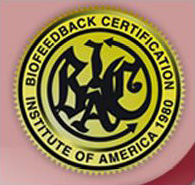BCIA Exclusivity
by Siegfried Othmer | June 26th, 2008
 The BCIA is currently polling members on the issue of whether certain designations should be trade-marked by the BCIA in order to set it apart from other claimants. This is an issue that might well be discussed more openly before an organizational decision is rendered.
The BCIA is currently polling members on the issue of whether certain designations should be trade-marked by the BCIA in order to set it apart from other claimants. This is an issue that might well be discussed more openly before an organizational decision is rendered.
One issue that concerns me is that trademarking is intended to preserve a zone of exclusivity for commercial enterprises that have a commercial interest to protect. A certifying agency can lay claim to exclusivity simply by virtue of the function they serve. As consumers we all benefit from having a number of oil companies out there looking for our business, but as professional consumers each of us has a need for only one certifying organization in neurofeedback.
The only reason more than one certifying organization would survive over the long term is that different niches of the market are being served. And if there are indeed different niches of the market to be served, then any exclusivity or preference should result from a better match to market requirements, not from entitlements. The BCIA already has the advantage of being the sister organization of the AAPB, even though there cannot be any ‘formal’ connection between them. If the BCIA were to falter going forward, it could only occur by virtue of their policies.
An argument can be made that there is indeed a need for additional certifying organizations in neurofeedback. The various techniques are differentiating to the point where it can no longer be assumed that a clinician competent in one will also be competent in another. BCIA certification does not inherently qualify one to practice with these various methods. Additional qualifications are needed, and certifications can very well go along with them. The LENS method requires its own learning curve, as does our own approach of individually optimized protocol-based training. The same holds for the TLC approach, for coherence-based training in general, and for Kirt Thornton’s method in particular, etc. And alpha-theta training is yet another distinct competence. Certification in these specific modalities is not a threat to the over-arching certification offered by the BCIA, and people seeking care may very well look for both general and specific qualifications.
A potential conflict arises when the terms that the BCIA wishes to trademark are also suitable for use by these subsidiary certifications. The best interest of the BCIA certificant may well be served with the BCIA having to maintain its de facto exclusive status through providing good services rather than by virtue of squatter’s rights, courtesy of the United States Patent and Trademark Office.
One may also want to consider what is happening in Europe, where a secondary certification is being planned for practitioners who wish only to work with optimum performance, and who don’t aspire to work with clinical conditions. A similar development may yet emerge in the US.
Share your toughts in the comments section below.






I am wondering if this effort to trademark BCIA is motivated by those who oppose individually optimized protocol-based training.
I certainly would favor the kind of sub-specialty certification, proposed by Siegfried.